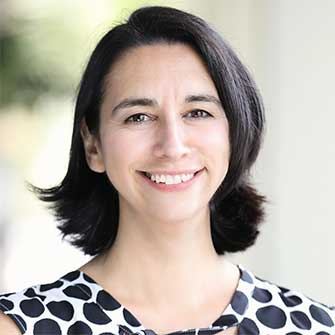What do you want to learn more about?
Domestic Violence Awareness Month: Is it a Gendered Issue?

Domestic violence (also referred to as domestic abuse or intimate partner violence) has existed for centuries and is typically understood as a male-on-female form of violence. The truth is anyone can be a victim of domestic violence, regardless of age, race, sexual orientation, faith, socioeconomic class – or gender.
Domestic violence against women is prevalent, yet it’s believed domestic violence against men is just as prevalent – but for various reasons, less spoken about and less acknowledged.
For National Domestic Violence Awareness Month, I wanted to look a bit more at the differences between gendered and domestic violence and my experiences working with men seeking help for domestic violence.
Gender-Based Violence vs. Domestic Violence
Gendered violence can be based on gender norms and gender role expectations – societal, cultural, or religious. Gender-based violence can impact anyone, including intimate partner and family violence, elder abuse, sexual violence, stalking, and human trafficking.
- Elder abuse can occur within family relationships or professional care provider relationships. It includes neglect and threats or physical, sexual, emotional, verbal, psychological, or financial abuse.
- Sexual violence is any action resulting in the loss of sexual autonomy (regardless of gender). It includes sexual harassment and assault, sex trafficking, non-consensual distribution of intimate images, and any other non-consensual sexual interaction.
- Stalking is a form of harassment that targets an individual, usually to control and induce fear. Stalking includes monitoring someone’s daily activity, following them physically, repeated interactions or engagement with someone’s social media, leaving unwanted gifts and notes and making repeated phone calls or emails to the person, their family, friends, or workplace despite requests to stop.
- Human trafficking is using power to force, defraud or coerce someone into engaging in labor or services, including commercial sex. Traffickers use tactics including violence, emotional manipulation, and psychological threats, exploiting social and economic inequity for their benefit.
Domestic Violence is an umbrella term that includes Intimate Partner Violence and Family Violence:
- Intimate Partner Violence is a pattern of abusive behaviors used by one partner to exert control over another partner in a close relationship, which includes marriage, dating, or previous relationships. Intimate partner violence can occur between any gender identity or sexual orientation.
- Family Violence is any abusive behavior between members of a family or household. Family violence includes threats or actual physical, sexual, emotional, verbal, psychological, or financial abuse.
How Prevalent Is Domestic and Gender-Based Violence?
In the United States, 1 in 4 women experiences abuse during their lifetimes. The United Nations reports that up to 70% of women experience gender-based violence in their lifetime.
Research indicates roughly 90% of domestic violence is caused by men within heterosexual relationships. However, the research is only based on what’s reported by individuals.
Many men don’t report incidences of domestic violence or gendered violence, so, likely, this data isn’t the complete picture.
The Violence Against Women Act (VAWA)
In our role as immigration evaluation therapists, something you’ll likely come across with many clients is the Violence Against Women Act (VAWA). The VAWA supports comprehensive, cost-effective responses to domestic violence, sexual assault, dating violence, and stalking.
Since its enactment, VAWA programs, administered by the U.S. Departments of Justice (DOJ) and Health and Human Services (HHS), have dramatically improved federal, tribal, state, and local responses to these crimes.
An immigrant client (of any gender) married to a US citizen or Lawful Permanent Resident who has suffered domestic abuse may be eligible for immigration relief under the VAWA. By doing so, they self-petition for lawful status in the United States, separate from the perpetrator of the abuse.
If their application succeeds, the victim will receive employment authorization, access public benefits, and become eligible to apply for lawful permanent residency status. It can also protect non-citizen victims of domestic abuse from being deported by canceling ongoing removal proceedings and granting the victim legal permanent residency status.
I do a fair amount of VAWA cases, and it is not uncommon to have a male client. In my experience of these cases, male domestic violence victims have unique needs and challenges.
Why is Male Domestic Abuse Underreported?
The overall number of domestic violence is unknown because so many cases go unreported. It is even more challenging to determine how many men are abuse victims. There is a range of reasons why men – especially men from different migrant backgrounds – may not report gendered or domestic violence:
- Fear of being seen as weak: For many men, reporting domestic violence to others leaves them with concerns about being viewed as weak, less-than, or incapable in some way. Toxic masculinity permeates many cultures and leaves men with inaccurate ideals and what it means to be a ‘man.’ In traditional patriarchal cultures, this can be even more exaggerated.
- Shame: For many victims of domestic violence, one of the most prominent feelings that impact whether it is reported or not is shame – this goes for both men and women. Victims of domestic violence are often also victims of emotional abuse and cognitive distortions – meaning they believe the violence is their fault. This can lead to intense feelings of shame and the desire to hide their experiences.
- Fear of not being believed: Social ideas around who is and isn’t a ‘victim’ when it comes to gendered violence can lead men to fear not being believed or having their experiences denied (perhaps with assertions that they need to ‘man up’ – which goes hand in hand with toxic masculinity).
- Understanding what constitutes ‘violence’: Behaviors and experiences that women would deem as violent or abusive may be overlooked by men. For example, if a woman slaps a man, it can often be overlooked as violent, but conversely, if a man slaps a woman, it’s clearly labeled as abuse.
Men can face just as many challenges as women when reporting domestic violence; they may also be at risk of threats from a partner who threatens to blame them for violence if they seek to report it. With most people commonly believing domestic violence to be a male-on-female crime, men may worry about the backlash they could face from such allegations.
When handling these cases, it’s essential to be aware of any bias or long-held ideas we might have around gendered and domestic violence and ensure that we work to support the individual in front of us in the best ways possible.
National Domestic Violence Month: An Opportunity
The impact and trauma of domestic violence can be felt for a lifetime by victims, especially those who never get a chance to have a voice or receive appropriate support.
We can use this month to keep educating ourselves and our communities and working with our clients to let them know we’re here for them and that support is available.
It’s important to note here that in raising the issue around men who are victims of domestic violence, I am in no way removing or detracting awareness away from women who are victims of domestic violence. It remains a fact that women are more likely to be victims of gendered abuse; but this doesn’t mean we should dismiss the issues that surround who, when and why men do or do not report similar abuses against them.
I’ll leave you with some resources to keep raising awareness:
- The Hotline: National Domestic Violence Hotline (for men and women).
- Identify Abuse: Recognizing abuse is the first step (for men and women).
- National Coalition Against Domestic Violence (for men and women)
- Report: How Coronavirus Is Affecting Victims of Domestic Violence
- National Hotlines – Victim Connect Resource Center (for men and women)

I’m Cecilia Racine, and I teach therapists how to help immigrants through my online courses. As a bilingual immigrant myself, I know the unique perspective that these clients are experiencing. I’ve conducted over 500 evaluations and work with dozens of lawyers in various states. Immigrants are my passion, I believe they add to the fabric of our country.
related articles
Helping Immigrants Find Safety and Healing Through U and T Visas
As mental health clinicians, we possess a unique set of skills that can be a…
Expand Your Expertise: Recommended Trainings for Immigration Clinicians
The Immigration Evaluation Institute Comprehensive course is a great first step into the world of…
Ethical Considerations in Immigration Evaluations
The role of mental health professionals in immigration evaluations is fraught with unique ethical complexities.…
Join the Free
Immigration evaluation
therapists facebook group
Are you a therapist that conducts immigration evaluations?



